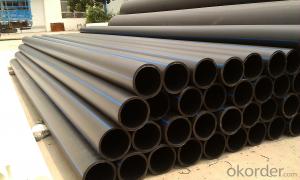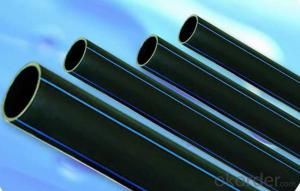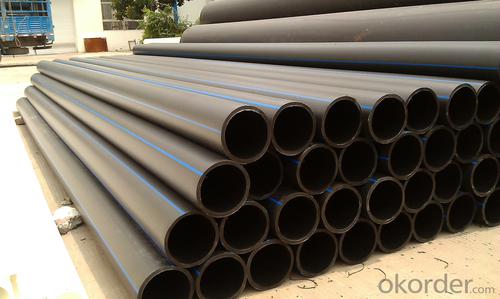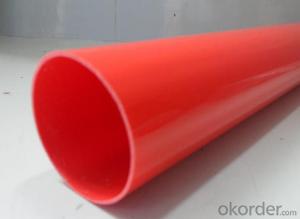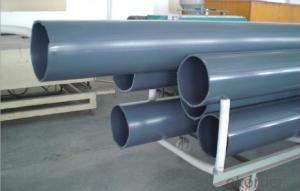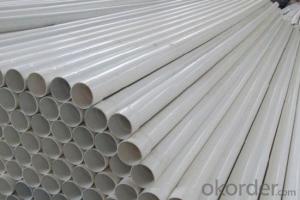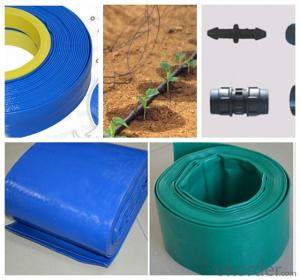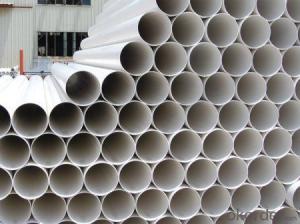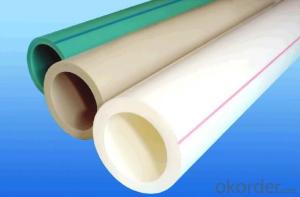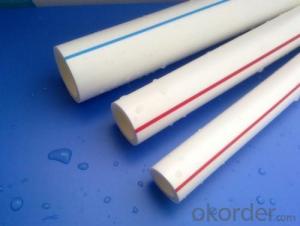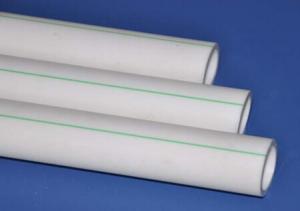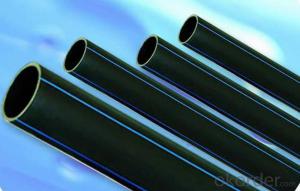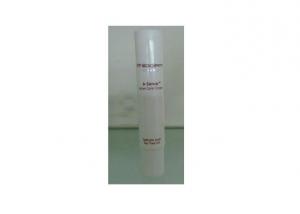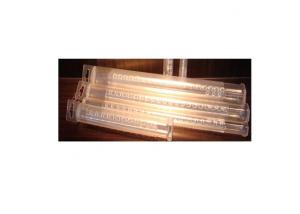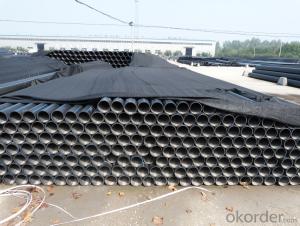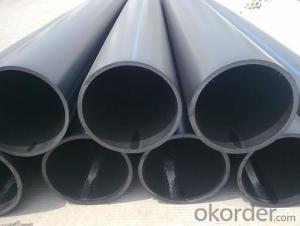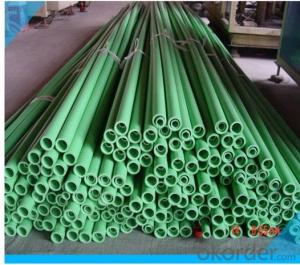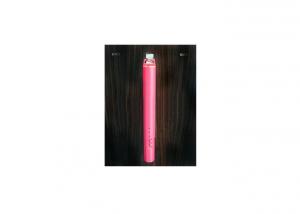Plastic Tubes HDPE Pipe ISO4427-2000 DN280
- Loading Port:
- China Main Port
- Payment Terms:
- TT OR LC
- Min Order Qty:
- -
- Supply Capability:
- -
OKorder Service Pledge
OKorder Financial Service
You Might Also Like
Physical properties[edit]
Polyethylene is a thermoplasticpolymer consisting of long hydrocarbon chains. Depending on the crystallinity and molecular weight, a melting point and glass transition may or may not be observable. The temperature at which these occur varies strongly with the type of polyethylene. For common commercial grades of medium- and high-density polyethylene the melting point is typically in the range 120 to 180 °C (248 to 356 °F). The melting point for average, commercial, low-density polyethylene is typically 105 to 115 °C (221 to 239 °F).it is transprant.
Chemical properties[edit]
Most LDPE, MDPE and HDPE grades have excellent chemical resistance, meaning that it is not attacked by strong acids or strong bases. It is also resistant to gentle oxidants and reducing agents. Polyethylene burns slowly with a blue flame having a yellow tip and gives off an odour of paraffin. The material continues burning on removal of the flame source and produces a drip.[3] Crystalline samples do not dissolve at room temperature. Polyethylene (other than cross-linked polyethylene) usually can be dissolved at elevated temperatures in aromatic hydrocarbons such as toluene or xylene, or in chlorinated solvents such as trichloroethane or trichlorobenzene.[4]
GB/T13663-2000:
| PE63管材规格 | |||||
| 公称 外径dn,mm | SDR33 | SDR26 | SDR17.6 | SDR13.6 | SDR11 |
| 公称压力 PN,Mpa | |||||
| 0.32 | 0.4 | 0.6 | 0.8 | 1.0 | |
| 公称 壁厚 | 公称 壁厚 | 公称 壁厚 | 公称 壁厚 | 公称 壁厚 | |
| 16 | 2.3 | ||||
| 20 | 2.3 | 2.3 | |||
| 25 | 2.3 | 2.3 | 2.3 | ||
| 32 | 2.3 | 2.4 | 2.9 | ||
| 40 | 2.3 | 2.3 | 3.0 | 3.7 | |
| 50 | 2.3 | 2.9 | 3.7 | 4.6 | |
| 63 | 2.3 | 2.5 | 3.6 | 4.7 | 5.8 |
| 75 | 2.3 | 2.9 | 4.3 | 5.6 | 6.8 |
| 90 | 2.8 | 3.5 | 5.1 | 6.7 | 8.2 |
| 110 | 3.4 | 4.2 | 6.3 | 8.1 | 10.0 |
| 125 | 3.9 | 4.8 | 7.1 | 9.2 | 11.4 |
| 140 | 4.3 | 5.4 | 8.0 | 10.3 | 12.7 |
| 160 | 4.9 | 6.2 | 9.1 | 11.8 | 14.6 |
| 180 | 5.5 | 6.9 | 10.2 | 13.3 | 16.4 |
| 200 | 6.2 | 7.7 | 11.4 | 14.7 | 18.2 |
| 225 | 6.9 | 8.6 | 12.8 | 16.6 | 20.5 |
| 250 | 7.7 | 9.6 | 14.2 | 18.4 | 22.7 |
| 280 | 8.6 | 10.7 | 15.9 | 20.6 | 25.4 |
| 315 | 9.7 | 12.1 | 17.9 | 23.2 | 28.6 |
| 355 | 10.9 | 13.6 | 20.1 | 26.1 | 32.2 |
| 400 | 12.3 | 15.3 | 22.7 | 29.4 | 36.3 |
| 450 | 13.8 | 17.2 | 25.5 | 33.1 | 40.9 |
| 500 | 15.3 | 19.1 | 28.3 | 36.8 | 45.4 |
| 560 | 17.2 | 21.4 | 31.7 | 41.2 | 50.8 |
| 630 | 19.3 | 24.1 | 35.7 | 46.3 | 57.2 |
- Q: How are plastic tubes measured?
- Plastic tubes are typically measured by their outer diameter, which is the distance across the widest point of the tube.
- Q: I don't mind cutting the wire but I want to make sure hampster won't get hurt the bubble tube can't be pushed off by her.
- You can fold the wire back so that there are no sharp edges when you cut. You can certainly use zip ties, just check them to make sure your hamster doesnt chew them off. Be creative. Modified cages are fun to make!
- Q: Can plastic tubes be used in medical applications?
- Yes, plastic tubes can be used in medical applications. They are commonly used in various medical procedures such as intravenous therapy, catheterization, and drainage systems. Plastic tubes offer advantages such as flexibility, durability, and compatibility with different medical fluids. They are also cost-effective and can be easily disposed of after use, reducing the risk of contamination.
- Q: Can plastic tubes be used for packaging personal care products?
- Yes, plastic tubes can be used for packaging personal care products.
- Q: Wondering if there is any health risk associated with putting pieces of copper pipe, plastic PVC (?) pipe, or garden hose pieces into a campfire? I have been to campfires where these things have been put into the fire, and it does make the fire turn all kinds of colors. Just wondering if it's safe to sit around the burning campfire with these things added....
- Copper shouldn't be a problem, but PVC and Plastic or rubber hose will burn and give off noxious fumes.
- Q: where can i find empty plastic candy tubes for sand candy?
- candy shop bin maybe?
- Q: Are plastic tubes resistant to chemicals?
- Yes, plastic tubes are generally resistant to chemicals. However, the level of resistance can vary depending on the type of plastic used and the specific chemical involved.
- Q: Are plastic tubes resistant to oils or greases?
- Yes, plastic tubes are generally resistant to oils and greases.
- Q: Can plastic tubes be used for hydroponic systems?
- Yes, plastic tubes can be used for hydroponic systems. Plastic tubes are commonly used in hydroponics as a cost-effective and practical option for delivering nutrient-rich water to the plant roots. They are durable, lightweight, and easily adjustable, making them suitable for various types of hydroponic setups.
- Q: What is the diameter range of plastic tubes?
- The diameter range of plastic tubes can vary widely depending on the specific application and manufacturing process. However, they typically range from a few millimeters to several inches in diameter.
Send your message to us
Plastic Tubes HDPE Pipe ISO4427-2000 DN280
- Loading Port:
- China Main Port
- Payment Terms:
- TT OR LC
- Min Order Qty:
- -
- Supply Capability:
- -
OKorder Service Pledge
OKorder Financial Service
Similar products
Hot products
Hot Searches
Related keywords
